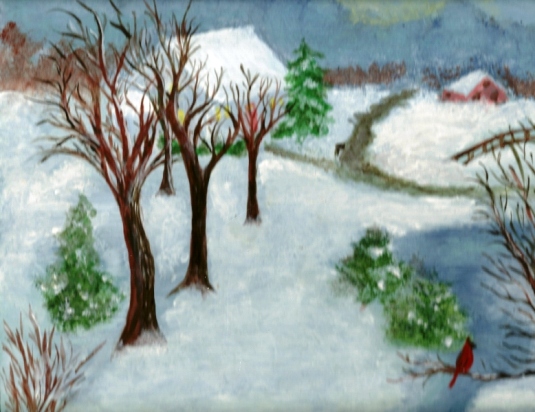
December 31, 1846, Haworth, West Yorkshire
No matter his fidgetiness, Anne experienced her usual pleasure in drawing because it calmed her and ordered her thoughts. She managed a decent depiction of Flossy before he left his window pose and the room. Setting her art box on the nightstand, she sat on the edge of the bed to use the sketching block on her lap, first draping the eiderdown over her legs and feet. Even fully dressed she was chilled to the bone. On the canvas Anne’s imagination and brush redesigned the window, adding a curtain hooked high to one side and a warmer outlook. Eventually Flossy returned to the room. Anne observed him stalking and scratching at overwintering bugs, rolling on the braid rug between the bed and the dresser, and briefly posing at the window again.
She spent the next hour on the painting, coloring in his darker curls and smooth cavalier face and the shadowing of his white underbelly.
“You’re right,” Anne said once the light and her impulse to be other than convalescing started to fail and Flossy had long since curled up on the bottom of the bed. “It can be finished another day.”
“And another year.” Emily entered the room with something wrapped in a serviette, tapping Flossy’s nose to let him know what she thought of his begging.
“It’s warm and smells sweet and of currants.” Anne accepted Emily’s gift. “You’ve made bannocks.”
“It’s New Year’s Eve, after all.”
“I haven’t even made an effort.”
“It appears you have.” Emily examined Anne’s painting without touching it. “A bold likeness.”
“Like trying to capture a fly.” Anne leaned over to stroke Flossy, who glanced at Emily sideways, his jowls slavering and a paw reaching up.
“You don’t fool me.” Emily folded her arms. “You’re more in love than frustrated with that little bugger of a mutt. Now, won’t you try the bannock?”
Anne unwrapped it in her lap, admiring it: a golden-brown, crusty hillock made of pastry and dried fruit that crumbled compactly as, not long out of the oven, it should. Finally, she broke off a piece.
“If you don’t smack your lips,” Emily winked, “how will I know you’re enjoying it?”
“Anne keeps us all wondering.” Charlotte was in the doorway. “Is the party up here? And with the best society, our little society.” She took a portion of what was left of the bannock. “The safest society.”
~ from Without the Veil Between, Anne Brontë: A Fine and Subtle Spirit

May 2019 bring good health, many blessings and joys to you and yours.
May it bring sanity, healing,
and an emphasis on love and compassion
for the entire world.
![]() ©Artwork and writing, unless otherwise indicated, are the property of Diane M Denton. Please request permission to reproduce or post elsewhere with a link back to bardessdmdenton. Thank you.
©Artwork and writing, unless otherwise indicated, are the property of Diane M Denton. Please request permission to reproduce or post elsewhere with a link back to bardessdmdenton. Thank you.


















